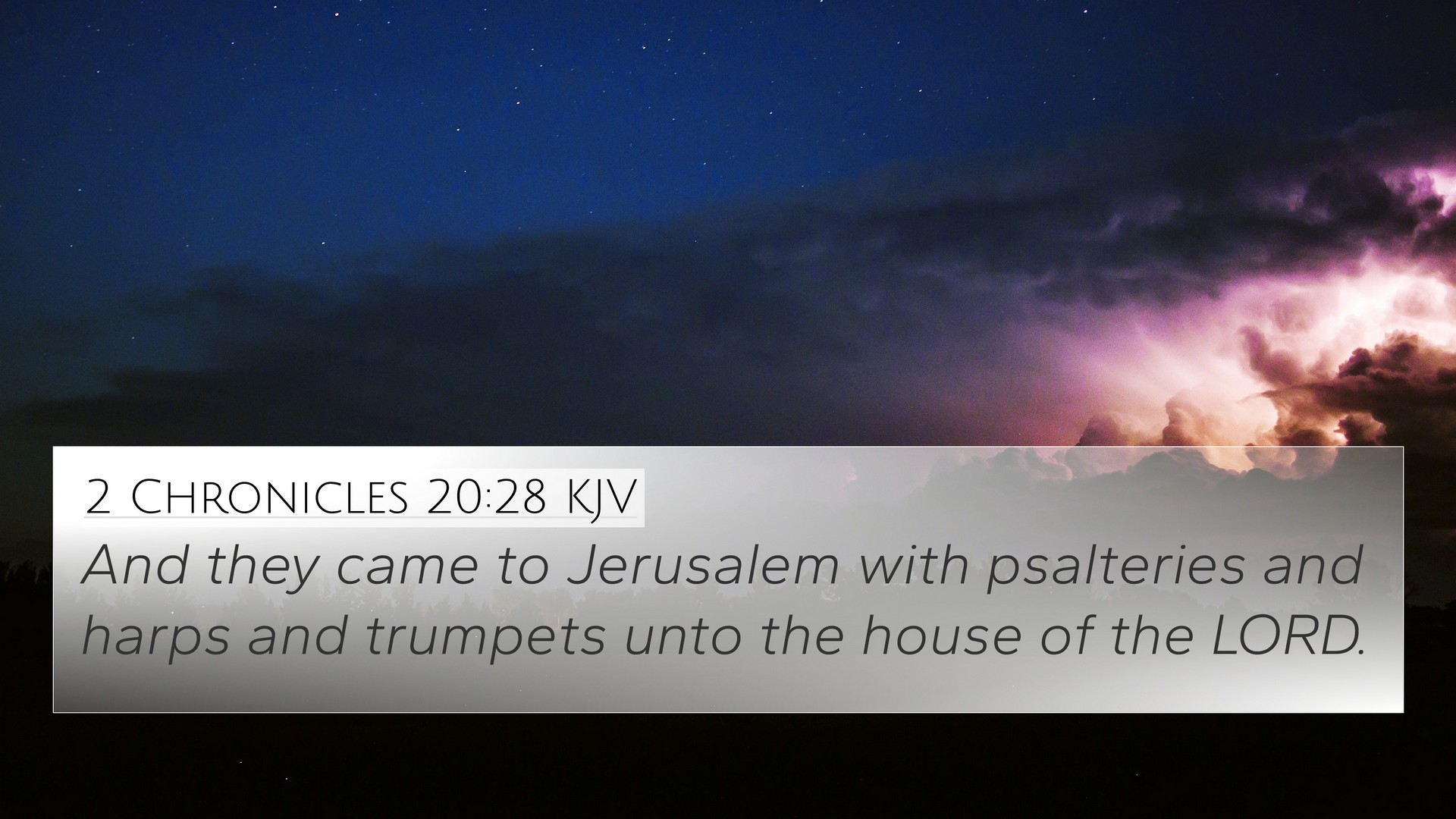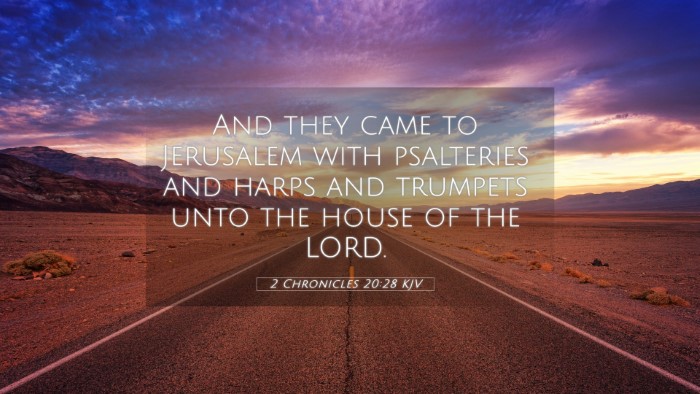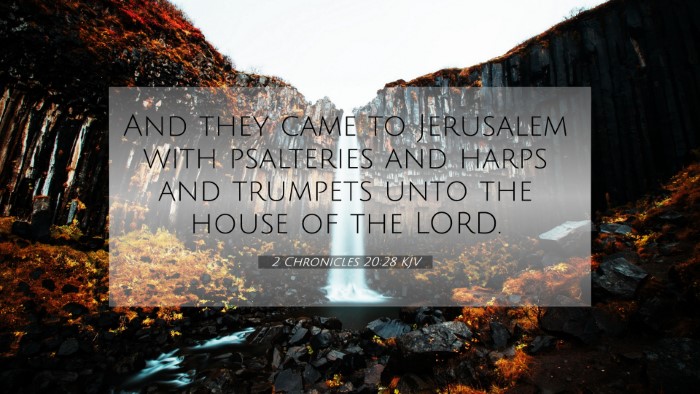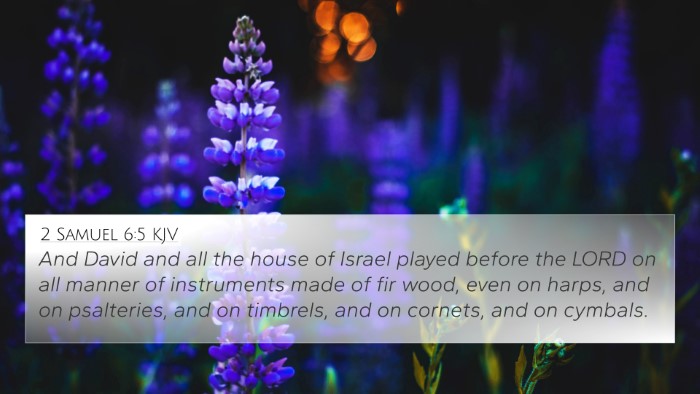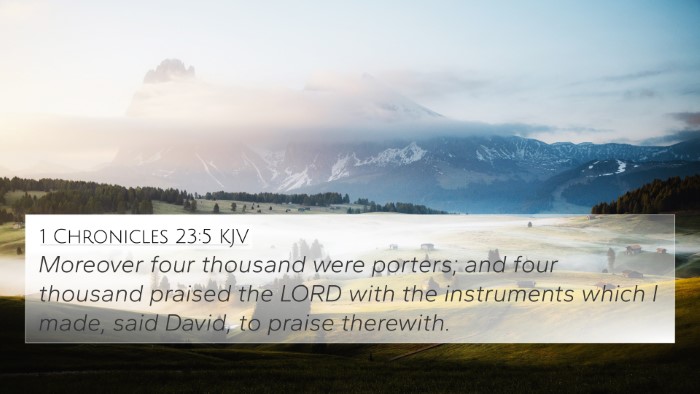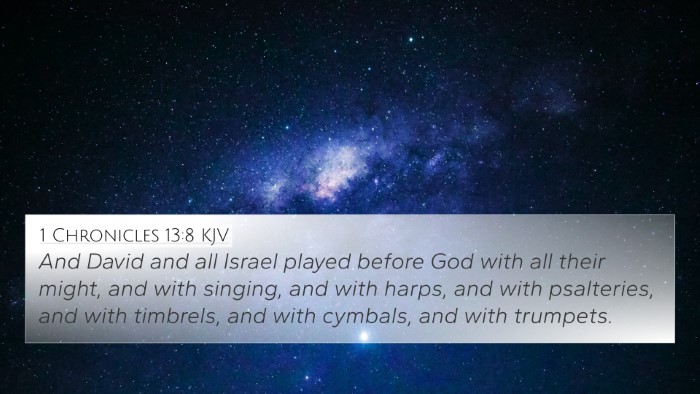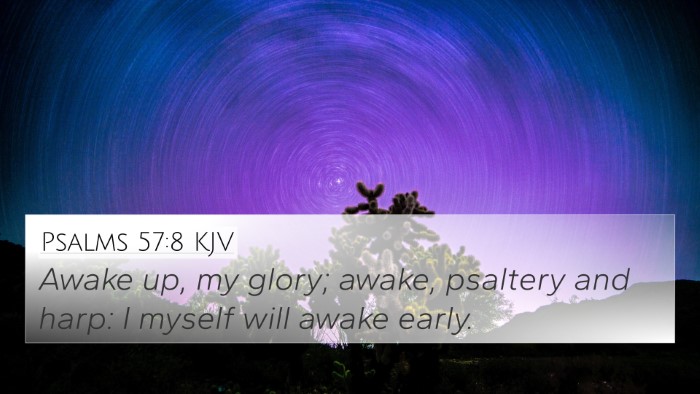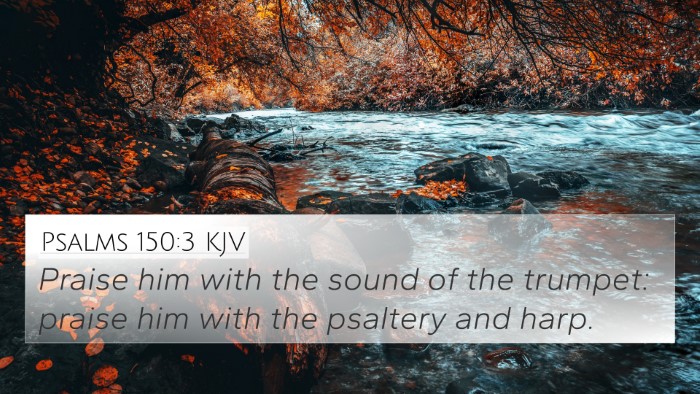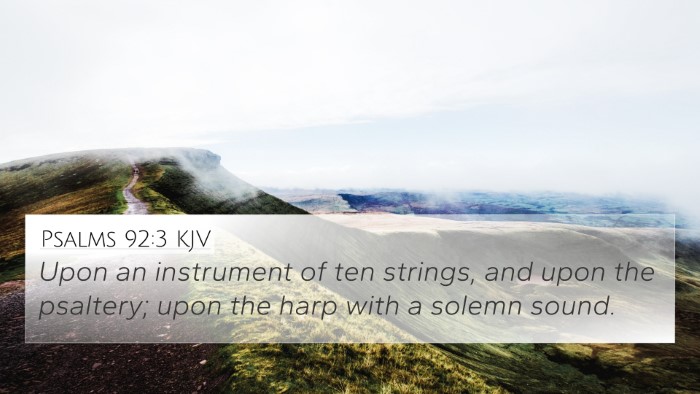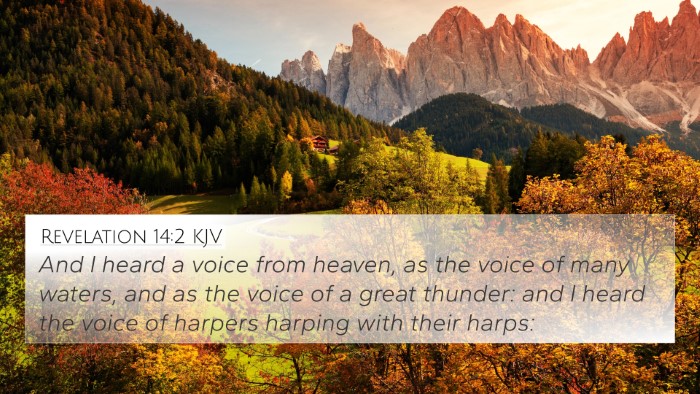Understanding 2 Chronicles 20:28
Verse Reference: 2 Chronicles 20:28 - "And they came to Jerusalem with psalteries and harps and trumpets unto the house of the LORD."
Overview
This verse captures a moment of great celebration following a significant military victory for King Jehoshaphat and the people of Judah. The context is a powerful demonstration of God’s deliverance, leading to worship and unity in the community.
Commentary Insights
Insights from various commentaries help to elucidate the multifaceted meanings present in this scripture:
-
Matthew Henry:
Henry emphasizes the importance of communal worship in response to God's miraculous aid. The people's return to Jerusalem signifies not just a physical journey but also a spiritual one. Their acts of praise, using various instruments, embody a heartfelt response to divine intervention, highlighting the significance of worship in acknowledging God's sovereignty.
-
Albert Barnes:
Barnes notes that the return to Jerusalem with musical instruments symbolizes joy and gratitude for God’s salvation. He connects this verse to the broader theme of celebrating God’s power and presence among His people, suggesting that such worship enhances their communal identity and strengthens their relationship with God.
-
Adam Clarke:
Clarke offers a detailed analysis of the specific instruments mentioned - psalteries, harps, and trumpets - illustrating their traditional roles in worship. He explains how music has been a form of expression in worship throughout Biblical history, reinforcing the idea that celebration and music are integral to spiritual life.
Connections with Other Bible Verses
This verse can be linked to various other scriptures that discuss worship, God’s deliverance, and communal rejoicing:
- Psalm 100:1-2: "Make a joyful noise unto the LORD, all ye lands. Serve the LORD with gladness: come before his presence with singing."
- Psalm 150:3-5: "Praise him with the sound of the trumpet: praise him with the psaltery and harp. Praise him with the timbrel and dance: praise him with stringed instruments and organs."
- 1 Chronicles 16:9: "Sing unto him, sing psalms unto him, talk ye of all his wondrous works."
- Isaiah 12:4: "And in that day shall ye say, Praise the LORD, call upon his name, declare his doings among the people, make mention that his name is exalted."
- Acts 2:46-47: "And they, continuing daily with one accord in the temple, and breaking bread from house to house, did eat their meat with gladness and singleness of heart, praising God, and having favor with all the people."
- Philippians 4:4: "Rejoice in the Lord always: and again I say, Rejoice."
- Revelation 19:1: "And after these things I heard a great voice of much people in heaven, saying, Alleluia; Salvation, and glory, and honor, and power, unto the Lord our God."
Thematic Applications
This verse invites reflection on several key themes in the Bible:
- The Power of Worship: Worship is not just an act of singing but a lifestyle reflecting gratitude and recognition of God’s greatness.
- Community in Faith: The communal aspect of their worship emphasizes the importance of gathering together in faith, encouraging harmony and unity.
- God's Deliverance: The context of this verse underscores the theme of God delivering His people from their adversaries, fostering trust and faith in divine protection.
Applying Cross-Referencing Tools
Utilizing tools such as a Bible concordance or a Bible cross-reference guide can significantly enhance your understanding of passages like 2 Chronicles 20:28. Here are some methods:
- Identify Related Verses: Seek out passages that echo the themes of worship and deliverance, as noted above.
- Engage in Comparative Analysis: Compare how different authors present worship across both the Old and New Testaments.
- Utilize Digital Resources: Many online platforms or software offer cross-referencing capabilities and thematic search functions.
Conclusion
In summary, 2 Chronicles 20:28 is a pivotal verse that beautifully encapsulates the essence of worship and community in the face of divine salvation. By exploring cross-references and engaging with this text, readers can deepen their understanding of its significance within the broader scriptural narrative.
